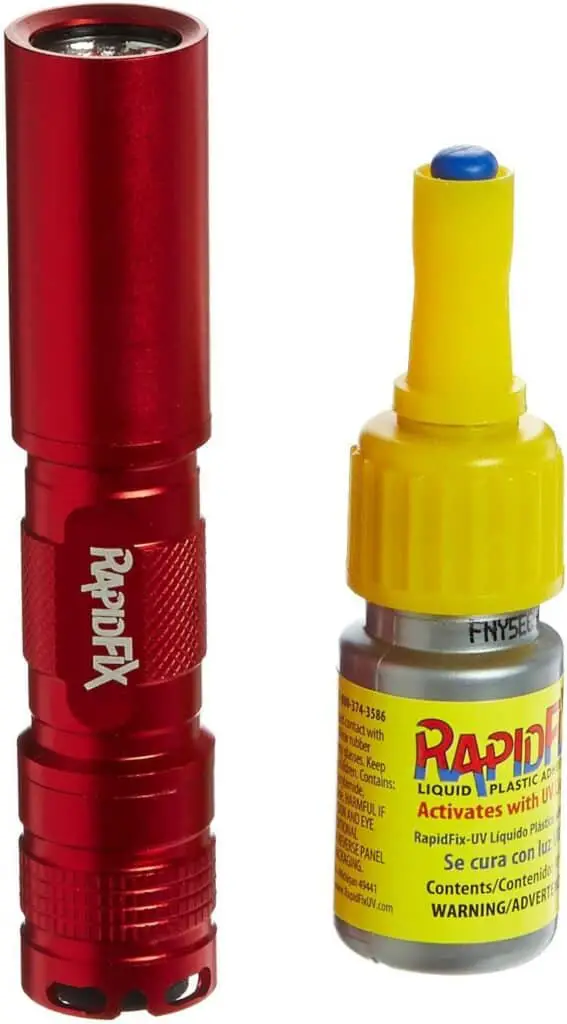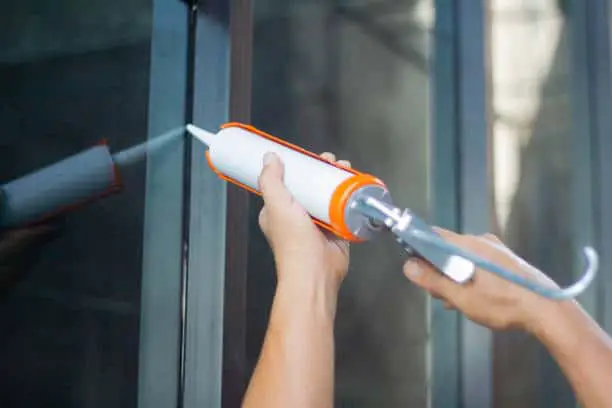Choosing the proper glue to get your job done can often be tricky, especially for metal projects. You will be overwhelmed by the many different kinds of adhesives on the market and materials that can be glued to the metal.
In this article, we will cover how to glue metal to glass, including the most suitable adhesives for this project. Let’s check it out!
Things You’ll Need
Metal adhesives usually do not work well to glue glass, so you should use glass glue that can work with metal.
Using super glue is ideal for complex and small projects around your house.
Regarding bigger tasks, such as fixing your glass table top onto one steel frame, you will have several kinds of glue to choose from.
Light Curable (UV) Adhesive

This glue kind is activated utilizing UV light which makes the glue set. It will form a chemical bond to metal/glass surfaces that is too robust to beat.
This glue type will also work well with glass since it is feasible to shine UV light via the surface to have maximum exposure. Some products, such as the RapidFix UV Liquid Plastic Adhesive, come with a UV flashlight.
Hybrid Silicone Polyurethane
This option combines the adhesive power of polyurethane glue and the benefits of silicone, making it ideal for gluing glass to metal.
Structural Acrylic
Structural acrylics are developed for demanding applications requiring high shear, peel, tensile strength, and maximum impact and shock resistance.
Clear Epoxy
These heavy-duty adhesives require mixing to activate the setting process. They require up to three days to totally cure. They are very reliable adhesives for fixing glass to metal.
Cyanoacrylate (Super Glue)
This option dries quickly but is brittle once it has been set. You use cyanoacrylate gels which work better for glass. Yet, it’s mainly for simple repairs and small jobs.
How to Glue Metal to Glass? The Step-by-Step Guide

Step 1: Safety
Before you start working with glue, we recommend wearing nitrile gloves and safety glasses to protect yourself.
Also, ensure your work area is well-lit, well-ventilated, and free of any trip hazards. They are all the basic precautions.
You should also follow the instructions and recommendations with the adhesive of your choice.
When working with metal and glass, you also need to guard against any sharp edge that can cut you.
Regarding the glass, you should be extremely careful to avoid dropping it or causing an impact that could break it.
Step 2: Preparation
Regarding preparing glass and metal before gluing, you must ensure you have two clean surfaces. Preparing glass is a breeze.
You only need to remove any previous glue residue using a fresh blade. After that, wipe it with soapy water, then leave it to dry.
For preparing metal, you’ll need to start by removing any loose grime and dirt stuck to it. You should look for rust and remove it using wire wool or wire brush.
Then, you can use sandpaper to do the job and make the surface a little rough. Finally, clean it using one damp cloth.
Now, both should be all set to put the glue on.
Step 2: Application
For all glass-to-metal adhesives apart from epoxy, the glue won’t require mixing or preparing before applying.
If you use epoxy resin, you must mix the two parts before being ready to glue.
If you want to have a great bond between glass and metal, we recommend applying a glue’s thick bead in one even pattern.
By putting your glue generously in your joint’s center, it is easy to compress the surfaces that will be bonded together. It will push your adhesive out to both sides and remove any air bubbles.
Getting everything in place as close as possible is essential since you do not want to move anything around after the first contact.
Glass is transparent, meaning you can spot any mistakes. That said, you can make adjustments before it’s too late.
Step 4: Setting And Curing
To fix the glass to metal, you must ensure to give them enough time to set and cure correctly before touching enough.
And you have it! Above are the necessary steps to glue metal to glass.
FAQs
Does Epoxy Stick to Glass and Metal?
Utilizing epoxy resin to stick metal and glass is an excellent idea for any DIY fixing.
It is okay to buy a clear product for joints that can be visible via the glass, providing an outstanding finish.
Our recommended epoxy resin: Conspec – Crackbond LR-321 Epoxy Resin
What Can I Use to Glue Metal to Glass?
Various kinds of adhesives that you can use to glue glass and metal. Some of the most common adhesives are silicones, acrylics, and epoxies.
Each kind of adhesive has its own set of unique properties, making it great for some instances. Choosing the proper adhesive for your job is essential to have a robust bond.
Can Silicone work well?
It is a decent adhesive for sticking metal to glass. The fact is that it is used in window frames in many cases.
Using silicone to stick glass and metal is a great option, but it’s better if you go with stronger adhesion like a hybrid silicone polyurethane, such as Everbuild Stixall.
Can Araldite Fix Metal to Glass?
The answer is yes. It is a two-part epoxy adhesive, often used to bond glass to metal. It consists of a hardener and a resin. They will form a waterproof, strong bond if they are mixed together.
The Bottom Line
By following the steps mentioned in our post, you can successfully glue metal to glass. By doing that, you can make a wide variety of functional and decorative projects. So, what are you waiting for? Get begun now!
